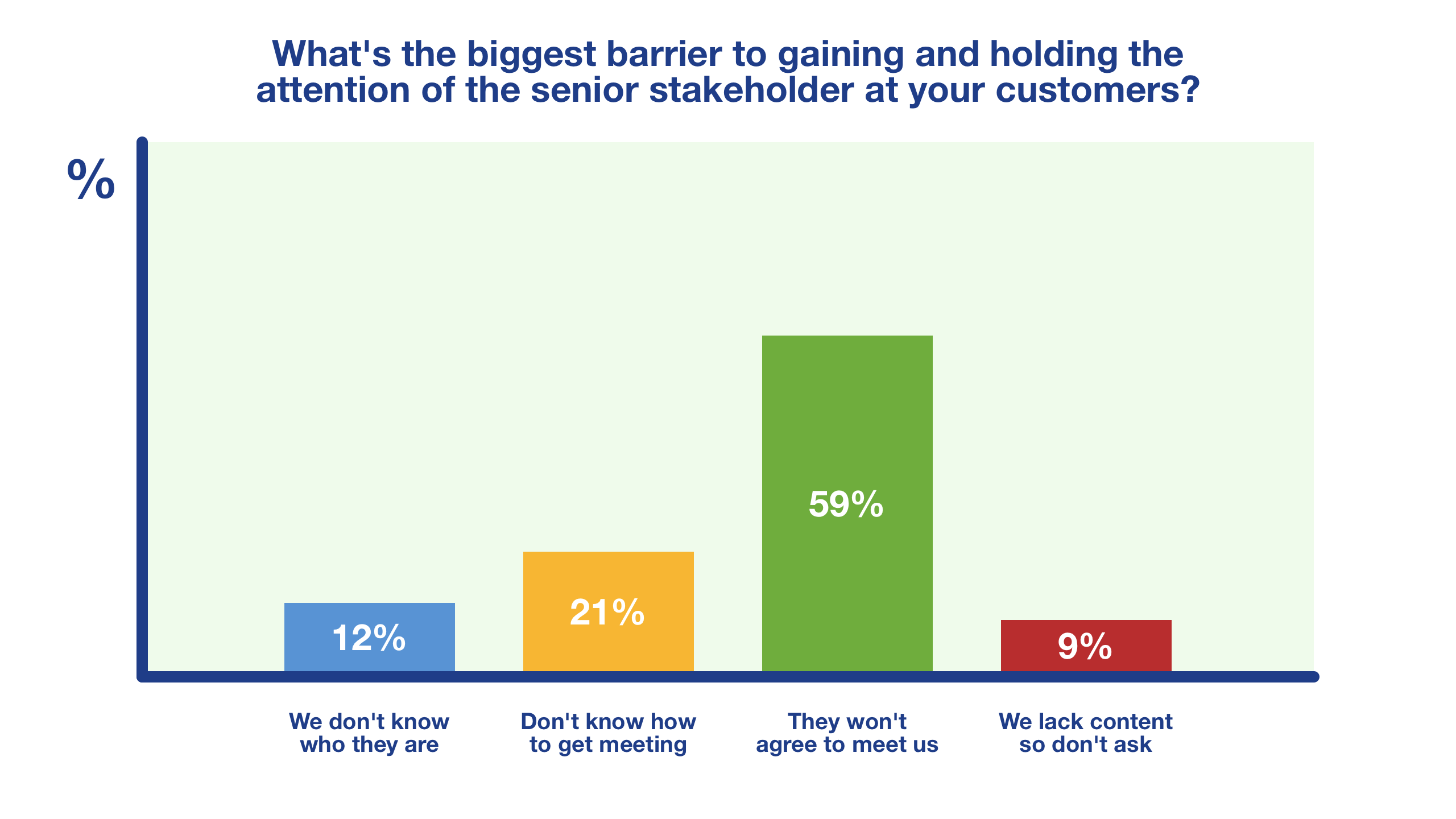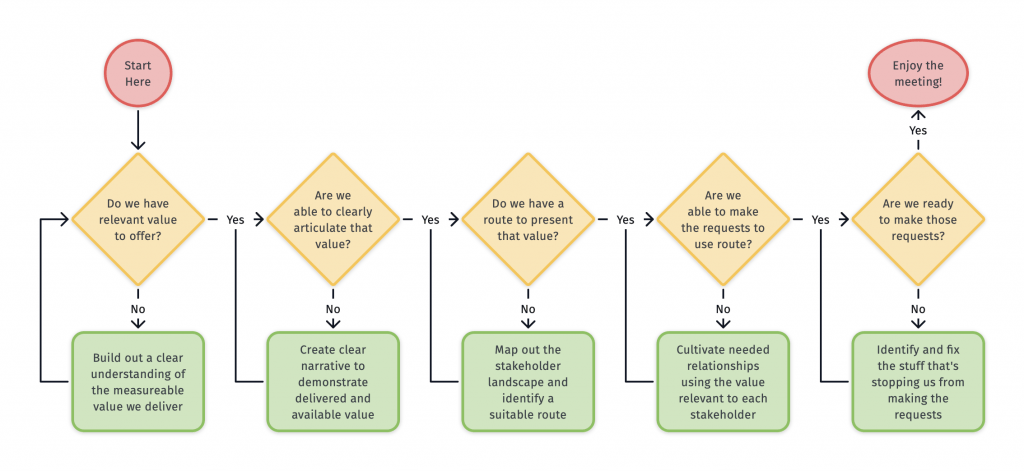What keeps us from effective relationships with the key stakeholders at our customers? That’s a question that sits at the heart of many customer facing roles including sales and customer success. Whenever we run training courses for customer success managers the question of how to get and hold the attention of our senior stakeholders, well, it always comes up.
I’m going to dig into this question in detail in this post assisted by the result of a couple of LinkedIn polls. Before you read any further stop and ask yourself these two questions.
- What’s the biggest barrier to gaining and holding the attention of the senior stakeholder at my customers?
- What do I believe is the most common reason my key senior customer stakeholder(s) won’t agree to meet with me?
The Poll Results
Those are our poll questions. Here’s how the first poll was answered.

Almost 60% of our respondents believe that the senior stakeholder at their customers won’t agree to meet with them. I find that statistic simultaneously shocking and unsurprising.
Shocking because your senior stakeholder should be enthusiastic to meet you. If we accept that a CSM’s job is to assist customers to realise value and ROI then their interests are fully aligned with those of the typical senior stakeholder. I’ve met few senior stakeholders who were uninterested in unlocking the full value from the investments they’ve made.
Unsurprising because it rhymes with what we hear from CSMs on our courses and when we talk with them in other forums. It seems that senior stakeholders are reluctant to set aside time to meet with customer success managers.
After digging into this poll result it was clear another poll was needed. What would CSMs cite as the main reason their senior stakeholders won’t agree to meet? Can you guess? What did you answer?
Here’s the poll.

A moment’s thought and it’s pretty obvious that this was going to be the answer. 96% of respondents answering either that they are not seen as important or the customer doesn’t see the value. That’s basically the same answer. Someone who offers no value is going to be unimportant to a senior stakeholder. Harsh but true. Why would anyone meet with anyone in a professional situation if they saw no value in the meeting? Why would they consider someone who appears not to offer value to be important.
The Good News
There is good news here. We understand the problem clearly. Or at least, we think we do. What else might be going on?
Value and importance, in this case as we’ve said we can usefully group these. If the customer saw value that would automatically make us important and if the customer saw us as important that would in all probability be because they believe we could provide value.
So it all comes down to one word. Value. And at this point we turn away from our emphasis on the customer. The customer who won’t agree to meet us because they don’t see they value in that meeting. We turn away to ask ourselves a few questions.
- Do we have relevant value to offer to our senior stakeholder?
- Are we able to clearly articulate that value in a way that’s relevant to that stakeholder?
- Do we have at least one route to present this value to the stakeholder?
- Are we able to make the necessary requests to use that route?
- Are we ready to make those requests?
These stack, we can get stuck at any point. So here’s a handy little flowchart you can use to analyse your situation to understand where you are and how you might break the cycle that’s holding you back (right click and ‘open image in new tab’ if you want a bigger version of this flowchart).

This might seem simple. There’s a reason for this. The process is simple, each step is clear and easy to understand. But, and it’s a fairly big but. Each step takes effort and patience to execute. And you can’t skip steps. You might have a clear route that can take you to your senior stakeholder but it’s no use to you if you’re not clear about the value you offer or how you’ll present it in the most compelling way.
You can apply this analysis customer by customer. Hopefully you won’t find yourself stuck at the value steps too often, once you’ve done that a few times you’ll have a compelling framework of information on which to base all future customer discussion. You might find yourself needing to identify your route and cultivate the necessary relationships on a regular basis however. Sadly there are no shortcuts here but what you will accrue over time is the confidence to execute the process and deliver your value in a compelling fashion to every audience.
Want more on defining and articulating value? We’ve got you covered. Check out Matt’s latest article here.



